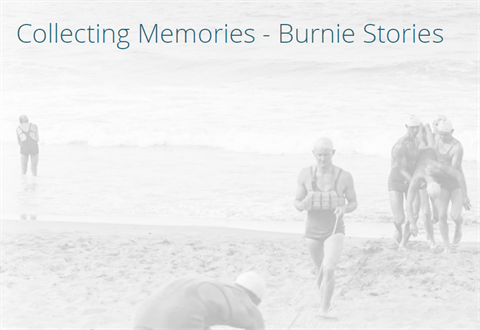Collecting Memories - Burnie's Stories
Published on 25 August 2023

Tell us your memories here
In late 2022 Burnie City Council commissioned Curio Projects with milangkani projects and Red Arrow to undertake Interpretive Services associated with the refurbishment of the Burnie Arts and Function Centre (BAFC). The team are currently developing a series of interpretive elements to integrate with the refurbished Burnie Cultural Precinct.
Using a combination of heritage objects, images and articles, the interpretive elements and discrete exhibitions will invite locals, visitors, and precinct users, to engage with the layered histories, unique individuals, incredible endeavours, and notable events that have created the Burnie of today.
Much of the heritage interpretation within the refurbished Burnie Arts and Function Centre will draw on the collections of the Burnie Regional Museum.
To support the proposed exhibited items, images and articles, the team are hoping to capture first-person memories of Burnie life from those who have lived, worked and played locally.
For example, did you or your family compete in a local sporting event of note, work for one of the major local industries, or have a memory specific to the Arts and Function Centre? Or maybe you or your family:
• have strong memories of attending a local church or local church events?
• have fond memories of attending the Burnie theatre?
• took part in the Shirley Temple Competition in the 1930s?
• have a memorable story from a Burnie Show?
- Do you remember the Town Hall Clock perhaps?
The original Town Hall clock, installed in 1913. This clock was removed in 1976 and restored in the 1990s by local horologist Phil Howard. The clock was on display in the Burnie Makers’ Workshop until its closure.
• have stories from your connections to Associated Pulp and Paper Mills Ltd. or one of the other major factories or producers in the area?
• have stories associated with a local club or organisation such as the Burnie Surf Lifesaving Club, the Country Women’s Association or similar?
Burnie Surf Life saving club
• participated in hosting or witnessed dignitaries visiting Burnie?
• have stories or ties regarding local shipping or railway operations?
Emu Bay railway boxes
• have stories linked to local landscapes, landmarks or buildings?
• have connections and stories associated with particular cultural or advocacy groups or events (i.e migrant community, First Nations, etc)?
The team have prepared an online survey to capture these memories, if you are willing to share your memories, we’d love to hear them.
Tell us your memories here
The Burnie Regional Museum & Collections
Home to Federation Street and the Early Burnie Exhibit, the Burnie Regional Museum’s pioneer village collections represent the history of Burnie and the wider North-West region, from the 1820s until the present day.
The museum was established under the direction of local historian Peter Mercer and holds several highly significant collections which document the history of local businesses, schools, sporting clubs and much more.
Four of those collections being drawn upon for the BAFC are:
1. The APPM Collection
The Associated Pulp and Paper Mills Ltd. was Burnie's first major secondary industry. Established in 1938, it had a significant impact on Burnie's growth and economic development.
The ‘Pulp', as it was commonly known, utilised the natural timber resources around Burnie to make paper. At its peak in the 1950s and 1960s, APPM Ltd and its subsidiaries employed around 3500 people. APPM also provided the first significant employment opportunities for women in Burnie.
The Burnie Regional Museum holds many documents relating to the company and its development, as well as an extensive collection of photographs.
2. The Emu Bay Railway Collection
The Mount Bischoff Railway and later the Emu Bay Railway, were integral to the economic prosperity of Burnie, and played a major role in the growth of the region and the development of the deep-water port.
In the 1880s a railway line was constructed to transport ore from the mines at Mount Bischoff on the West Coast. The wet climate made roads difficult to build and maintain, making rail transport necessary for the very profitable mining industry.
In 1900 the EBR extended the railway to the newly discovered silver-lead mining fields of Zeehan, Dundas, Mt Read and Rosebery, thus ensuring Burnie's continued prosperity from the West Coast mining industry. With its foundry and workshops, the EBR was the largest employer in Burnie in the early 1900s.
The Burnie Regional Museum holds photographs, documents, ledgers, maps, charts and plans that relate to the railway's development and history.
3. The Winter Photographic Collection
The Winter collection comprises a massive 300,000 photographic negatives assembled by three generations of the Winter family photographers, spanning ninety years of Burnie's history.
Founded by Ernest Albert Winter, Winter's Studio opened in Cattley Street in 1909. The business operated over 100 years, and at the time of its closure, was believed to be Australia’s oldest camera store.
This collection is an extremely valuable pictorial history and includes images of Burnie and many other areas of the North-West Coast, as well as photographs taken of weddings, social activities, important events and family portraits.
4. The Advocate Collection
The local newspaper of Burnie and the North-West has been in operation since the first issue, then titled The Wellington Times, was published in 1890. Following a period of rapid development which reflected the growth of the region, the name The Advocate was adopted in 1916, and by 1920 it was the sole newspaper of the North-West and West Coast region.
The Advocate photographic collection was donated to the Burnie Regional Museum in 2018. This collection is believed to consist of almost one million images dating from the mid-1900s to early 2000s.
Ensure your memories live on within Burnie's new Cultural Centre and precinct.
Tell us your memories here